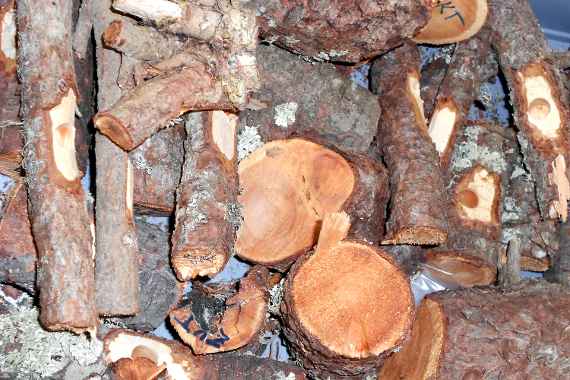Abstract
ISO-WOOD (Hallstatt-Holz): The wood of several tree species from different regions of Eastern and Central Austria was examined for its light elements (H, C, O) stable isotope signature and strontium isotope. The aim was, on the one hand, to develop an identification of the wood origin of recent wood and, on the other hand, to estimate the origin of prehistoric wooden tool parts based on a comparison with the isotopy of wood artefacts from the prehistoric Hallstatt salt mine. Results: In the case of recent wood, a distinction could be made between several regions of origin in Austria. When applying the results to prehistoric wood, several regions could be excluded and the most plausible regions of origin identified.
ISOWOOD tropical wood: The wood of Triplochyton xeroxylon (Ayous), an African tropical wood species, was examined. Samples of known geographical origin were examined for their isotopy and genetics and, at the end of the project period, the database was checked by carrying out a blind test. Results: Using the reference data, significantly different isotope signatures can be identified for many of the regions of origin. The result of the blind test shows a satisfactory result and demonstrates the fact that in the specific case the isotope analysis is at least equal in its informative value to genetic markers.
ISOWOOD tree slab: Isotope analysis of the annual rings of a tree slab containing more than 500 tree-rings and thus information about more than 500 years.
ISOWOOD Argentina: Isotope analysis of different types of tree wood from Argentina.
| Duration: | 04/2012 – 12/2016 |
| Partner Hallstatt-Wood: |
|
| Partner Tropical timber: |
|
| Partner Argentina: |
|
| Funded by: | BMWFW, FWF, ITTO, ÖAD |

